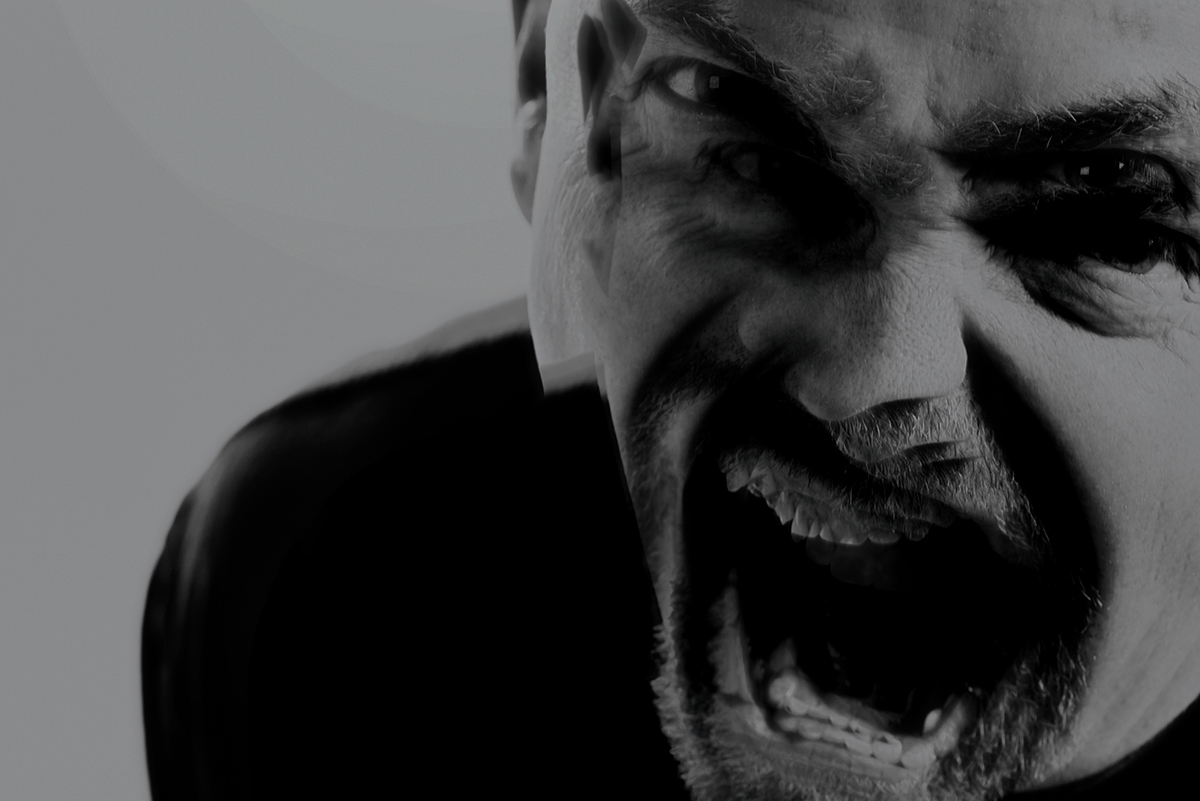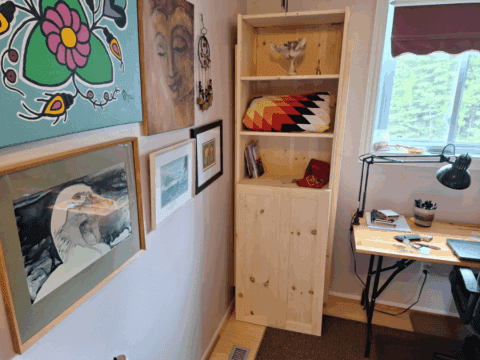A photograph taken during a Donald Trump rally last October shows a sea of white faces seated in a stadium in Loveland, Colo. Among them, a portly, bearded man sits between a woman and a boy, presumably his wife and his son, with an affectionate arm draped around the boy’s shoulder. On quick glance, it’s an image of a loving family. But on closer inspection, the image is chilling: the father’s T-shirt reads, “Black guns matter.”
Donald Trump rode to victory on a wave of hatred and, last month, became the 45th president of the United States.
The relationship between Trump’s abhorrent campaign rhetoric and actual hate-driven violence — against women, immigrants, Muslims, Jews, African Americans and others — is well documented. The Southern Poverty Law Center, which tracks 892 currently active hate groups in the United States, publishes news in a section on its website called “Hatewatch.” Last October, Trump featured in 22 of 47 stories, often for inspiring — albeit indirectly — acts of hate. In November, it was 30 out of 54.
But not all incidents make headlines. In the 10 days following the election, the centre documented 867 hate incidents, “a barrage of hate,” according to the centre’s president. In early December, the New York City Police reported a 115 percent increase in hate incidents. The same day, Michigan state officials reported there had been 65 hate incidents in the state since the election — up from an average of less than one a month. Even the American Libraries Association expressed concern about copies of the Qur’an and other books about Islam being defaced by racist symbols or slogans.
In the same period in Canada, a Montreal bakery was defaced with a swastika, racist flyers or posters were distributed in Vancouver and Toronto, and several places of worship in Ottawa — including a synagogue, a mosque and a United Church building where the congregation is led by a black minister — were vandalized with racist slogans and symbols.
Why do we hate? How was Trump able to channel hatred so successfully — and could his approach work in Canada? What part does religion play? As people of faith, how can we help to reduce the amount of hate in the world?
Hate crimes target people because of who they are, not because of anything they’ve done. Often, individuals are targeted because of something they can’t change, such as the colour of their skin, their gender or their ethnic origin. In this way, hate crimes attack not only the individuals, but the entire group to which they belong. It’s the group dimension that makes a hate crime different from other crimes.
Hatred directed toward First Nations deserves special attention in Canada. Although the rate of hate crimes targeting Indigenous persons and reported by police is relatively low, how often was hate a factor in the murder or disappearance of thousands of Indigenous women? The current national inquiry may shed some light: its mandate is to examine “all underlying causes of violence against Indigenous women and girls including systemic issues.”
In North America, Muslims are especially vulnerable. South of the border, hate crimes against Muslims are at their highest level since 2001, according to a 2016 multi-state study. In Canada, hate crimes against Muslims more than doubled between 2012 and 2014, from 45 to 99 police-reported incidents. Muslims are still much less likely to be targeted than Jews, but the crimes are twice as likely to be violent.
Working with youth is critical. In Canada, as elsewhere, research shows that people who commit hate crimes and those who suffer from them are disproportionately young. According to Statistics Canada, people under age 25 make up less than a quarter of the population, but they account for 31 percent of victims and 48 percent of offenders.
Stephane Pressault and Rizwan Mohammed staff a Canadian Council of Muslim Women project aimed at promoting civic engagement and breaking down barriers. Working with Muslim and non-Muslim youth, they try to foster open discussions in an intimidation-free environment. After a decade, they say they’re still learning. “There’s a back and forth to it,” says Mohammed, describing a pattern where hate is projected onto people trying to make their own lives safer and society more equitable. “Any time a space becomes safe for one group, another starts to feel unsafe,” he continues — white people may accuse black consciousness movements of hating whites; so-called men’s rights organizations see feminism as hatred of men.
“The desire for violent change is caused by a feeling of powerlessness,” says Pressault, “so our work with youth puts a lot of emphasis on increasing civic engagement.” Mohammed adds, “If you have no meaningful employment and no engagement with diversity, you’re much more susceptible to hate.” And this doesn’t only apply to youth. As Pressault notes, “You see Trump exploiting the pain of lower- and middle-classed white men in this election. They have a strong sense of losing something.”
There is relatively little scholarship on hate and hate crimes in Canada, but if Barbara Perry has her way, that will soon change. Perry, a professor at the University of Ontario Institute of Technology in Oshawa and co-chair of the International Network for Hate Studies, expects to launch a Canadian centre on hate, bias and extremism during the next academic year.
Having worked in both Canada and the United States, Perry believes the political rhetoric in this country is much more muted than south of the border. But even low-intensity hate incidents can have a severe effect.
“The problem with these relatively ‘minor’ incidents is that they’re constant, and cumulatively they have a really dramatic impact. . . . Even if people have not been victimized themselves but are part of a community that is targeted frequently, they live with an ongoing fear that they could be next. So they’re very conscious, [for example, when] they’re on a bus. ‘Are they looking at me? Might that escalate?’”
Religion, Perry notes, can figure into hate in two ways. “Sometimes a particular religion itself becomes the target.” Other times, the claim to love one faith gives rise to an indiscriminate hatred of others. “We have neo-Nazi groups across Canada embedded in what they would call a Christian base. They say Christians are God’s chosen people, and they use this belief to justify violence against others. Islamic extremists are similar.”
Thankfully, those kinds of extremists are a tiny minority in Canada. A Trump-style hate movement here would more likely be driven by social and ideological forces. In Canada, observes Stephane Pressault, “there’s a huge lack of understanding between the political left and right. It leaves no room for civil discourse and limits our ability to construct policies that work for everyone.”
Entrenched ideological divisions are a breeding ground for hate. Lest we become overly complacent about conditions here, Perry warns that Trump-style hatred has already made its way across the border. “Before the election, someone asked me about [Conservative leadership candidate] Kellie Leitch, and at that time, I said, ‘Oh no, she’ll be marginalized within the party and certainly would not be taken seriously across the country.’” But with Trump now president, it’s not inconceivable that Leitch could win the Conservative leadership or even become prime minister. “[Leitch] has actually been emboldened, as have others,” Perry says. “We need to learn from that and challenge her much more effectively.”
In times like these, churches and other places of worship can be sanctuaries of tolerance and understanding. “Churches are part of the infrastructure of community,” says Mohammed. “And Christians have this wonderful symbol of communion, of coming together and eating together. We don’t need more interfaith dialogue. We need more interfaith barbecues.”
Late on a Saturday evening in November 2015, someone set fire to the Masjid Al-Salaam mosque in Peterborough, Ont. A doctor living near the mosque texted her friend Christine Baayen to tell her about it. Both attend worship at Mark Street United.
Baayen, who runs a dog training and grooming business, happened to be a worship leader that morning. She passed the news on to the interim minister, who stepped out during the service to call the mosque’s leaders, offering space to host the Muslim community’s Friday prayer.
But the voices of hatred were still making themselves heard, one of them on Mark Street’s Facebook page. Baayen, who manages the page, posted a strongly worded warning that any hateful comments would be deleted and reported to the police.
Meantime, the city rallied in support of the mosque and Peterborough’s Muslim community. Various houses of worship opened their doors for Muslims to pray and speak to their congregations while the mosque was being repaired. Schoolchildren were assigned projects on Islam and toured the mosque after it reopened. As a result, interaction between the city’s faith communities has never been stronger.
A similar outpouring of support followed the racist attacks on the houses of worship in Ottawa. A solidarity gathering at a synagogue that had been targeted brought out hundreds of people of different faiths and drew national media attention.
The experience in both cities has highlighted a crucial lesson: hatred can be beaten. “Hatred is usually derived from not knowing, not understanding, being fearful,” says Baayen. “So if we can overcome it by being more open and more understanding and more welcoming, [then that experience] can be wonderful and very, very enlightening and spiritual. And I think the more that we do those things together, we will overcome it someday.”















